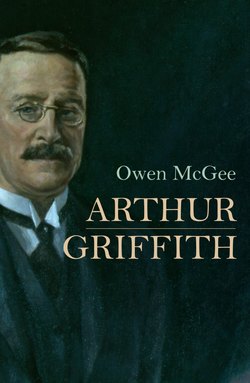Arthur Griffith

Реклама. ООО «ЛитРес», ИНН: 7719571260.
Оглавление
Owen McGee. Arthur Griffith
Отрывок из книги
ARTHUR GRIFFITH
OWEN McGEE
.....
Politically, Griffith’s YIL occupied the position of being independent to such a degree that it fitted into no particular camp but instead found its audience primarily within the republic of letters. This was not necessarily a guarantee of obscurity during the 1890s. Many could identify with the protests of Griffith and his YIL friends that, judging from contemporary trends, the ideals of Irish nationalism had been completely forgotten in a race for civil service employments and that this was being masked and justified in public by disingenuous attempts by politicians to promote sectarian animosities purely in an attempt to hide their own personal, or careerist, ambitions.97 Therefore, even if it was ineffective in a purely party-political sense, the fact that the YIL refused to obey MPs’ request that it engage in electioneering and distributed copies of its resolutions to all parties, irrespective of whether or not they identified themselves as ‘nationalist’ or ‘unionist’ (according to the post 1886 party-political definitions) or whether or not they held government offices, was respected by all who disliked the tenor of Irish party politics ever since 1886.98 In reviving debate on the ideals of the Young Irelanders of the 1840s, Griffith and his friends were also consciously echoing the green-white-and-orange symbolism of T.F. Meagher’s republican tricolour of 1848.
Griffith’s mentor in the YIL was Henry Dixon, a legal secretary at the Dublin Four Courts and former member of the Rathmines branch of the Irish National League. Now a professed admirer of both the Fabian Society in Britain and the Irish republican tradition, Dixon ran the avowedly republican National Club Literary Society with John MacBride (an IRB activist with links to the British naval port of Castlebar), launched the tradition of Bodenstown demonstrations and later became a business manager for one of Griffith’s journals.99 Indeed, Dixon was one of several YIL activists who later re-emerged as ‘Sinn Féiners’.100 These included Walter Cole (a future leader of Sinn Féin in Dublin City Hall), Peter White (the first secretary of Sinn Féin), Patrick Lavelle (Griffith’s future solicitor) and Denis Devereux, a printer who tried to establish a journal for the YIL during 1894 and ultimately became the printer and manager of Griffith’s first journal.101 Reflecting the National Club’s past attempt to mobilise support for Parnell specifically among town councillors nationwide, Dixon’s circle combined a practical conception of the importance of promoting local government reform with a bookworm-style conception of Irish nationalism. Reflecting Dixon’s friendship with leading Irish cultural nationalists like the republican-radical John Wyse Power and the great George Sigerson, the YIL also attempted to revive a partly successful, albeit short-lived, campaign from the early 1880s that appealed to church and school leaders to appoint more teachers of the Irish language.102 This was a cause that the YIL first took up, partly on Griffith’s suggestion, in May 1893.103
.....